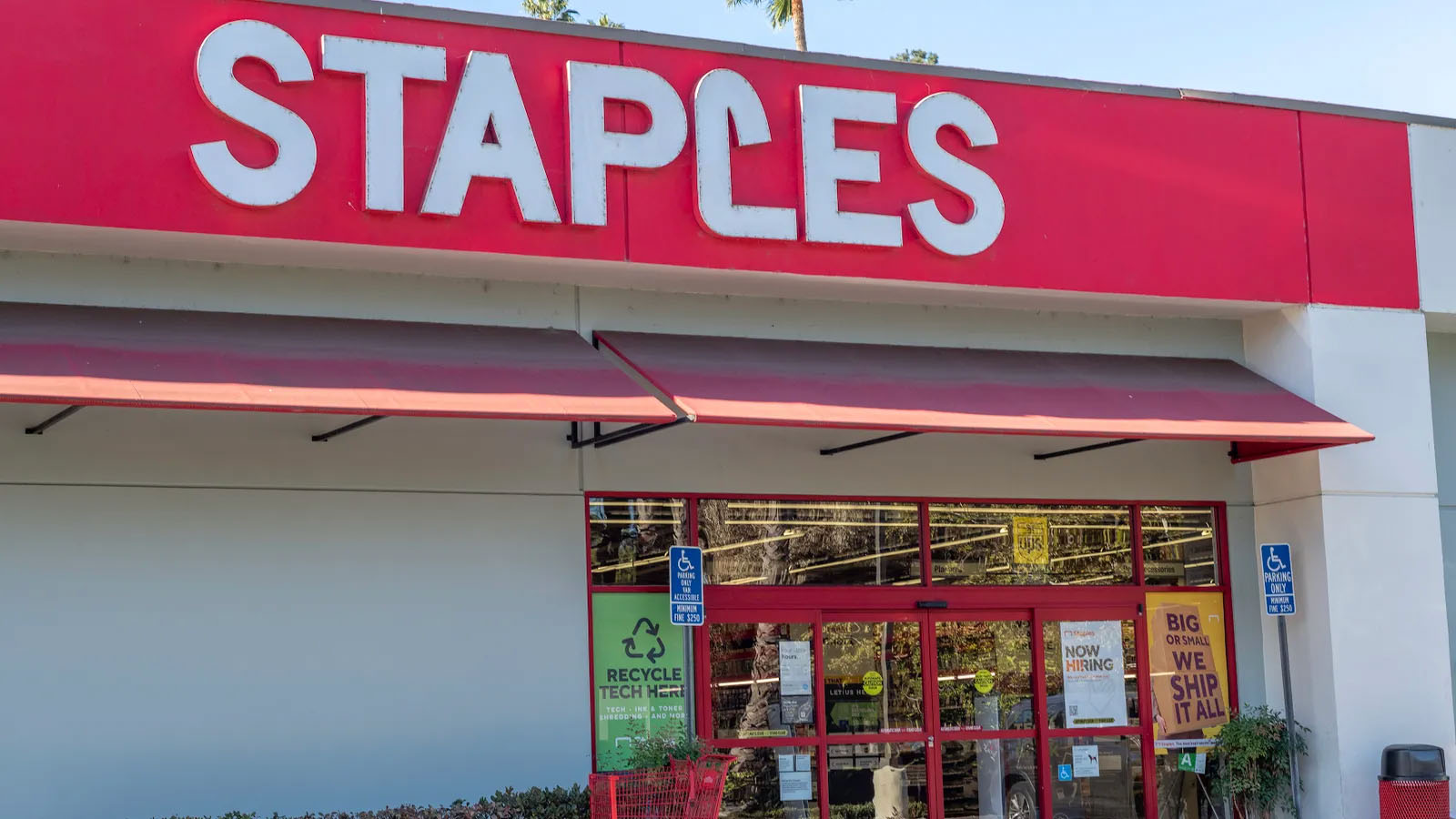1 min read
Staples Revamps Loyalty Program With Eagle Eye Technology
Staples enhances its loyalty program with Eagle Eye's AIR platform, delivering personalized, omnichannel rewards to better engage modern customers.
Get the latest insights, research and news delivered straight to your inbox.
Plus, enter to win the 2nd edition of Omnichannel Retail by Tim Mason & Sarah Jarvis!
No spam. We promise. 💜
Featured Case Study:
See how Eagle Eye helped Giant Eagle relaunch myPerks, delivering 25M+ personalized offers monthly and boosting loyalty program ROI.
Contact us to find out how we can enable your teams on our platform.


Whether Amazon, Uber or Alibaba, there's a lot written about these digital-only players and the impact they're having on the traditional high street and more traditional businesses.
But maybe they're missing the real challenge - customers just don't want what you sell.
Or, more specifically, how you sell it.
You can argue about tax advantages, skirting existing regulations or the perceived benefit of not being tied to an existing estate of bricks and mortar stores. However, the real advantage these digital businesses have is simply a focus on the customer rather than the product and a desire to constantly and consistently raise their game.
These digital-only businesses are inherently customer-centric businesses with myopic attention on and connection with their end customers.
Using a couple of examples.
I recently needed some new shelving for my house, so went to the traditional leading DIY player in the UK. Their website made it easy to locate the products, but for some reason, the shelves weren't eligible for home delivery - even for an order value of £129 - with the only option for 'click and collect'. So, entering my local store details, checking stock and placing the order, I'm set.
Or not.
The store subsequently called me to inform me that only half of my order was available in-store. There was no way to order more and no way to have it delivered. There was literally no focus on my needs as a customer and, instead, just a collection of independent systems - e-commerce and in-store POS which didn't talk to each other and failed to create a joined-up user experience. What I wanted was shelving - what I got was a headache.
Amazon, on the other hand, has hand-delivered a book I wanted, ordered on a Sunday, delivered the same day and worth just £7.
Another example is a UK market leading telecoms player providing, amongst other things, cutting edge 'fibre to the premises' broadband. With a new house and a new connection, my broadband isn't performing quite as expected. Using their online chat solution, I quickly spoke with an operator explaining my challenge. A full 10 minutes into the chat, having provided my account details, I was dutifully informed that they can only support copper connections. For the new fibre connections, I'll need to call an 0800 number. Apparently, it's a different team, different systems and a different contact method - despite it being the same company. What I wanted was someone to take ownership - what I got was more work.
Contrast this with Deliveroo, who, when notified that items were missing from my order via the app, immediately credited the order. A simple, responsive and joined-up experience.
None of this is truly hard. Systems can be connected. Processes aligned. Yes, these big legacy companies have legacy systems and large, sprawling product options, but the real challenge isn't the legacy systems but the legacy thinking.
Businesses like Uber are consistently innovating and evolving their user experience. They're not focused on the product but instead focus on the customer experience and the value it delivers. They iterate the customer experience quickly, fixing issues and adding capabilities - ultimately making it easier to do business with them.
Some legacy businesses understand this. Grocery retailer Woolworths in Australia created a separate business unit called WooliesX to "connect technology, data and insights to help make [their] customers’ shopping experience more personal and easier".
As Woolworths shows, for these businesses, what is required is a focus, not on the products produced or the services sold, but on the customer needs and how to constantly deliver a joined-up, engaging user experience.
If a traditional business fails, it won't be due to the lack of a level playing field, it'll simply be that they've been playing the wrong game with the wrong rules.
As Alan Klement says succinctly in his book 'When Coffee and Kale Compete':
'Customers don’t want your product or what it does; they want help making their lives better'.
Get the latest insights, research, and news delivered straight to your inbox.
Plus, enter to win the 2nd edition of Omnichannel Retail by Tim Mason & Sarah Jarvis!
No spam. We promise. 💜

1 min read
Staples enhances its loyalty program with Eagle Eye's AIR platform, delivering personalized, omnichannel rewards to better engage modern customers.

2 min read
See how gamification boosts grocery loyalty programs and drives bigger basket sizes through engaging customer experiences and behavior-driven incentives.

1 min read
Discover why putting customers first is the key to driving business success. Learn how empathy, value, and personalization build stronger loyalty.